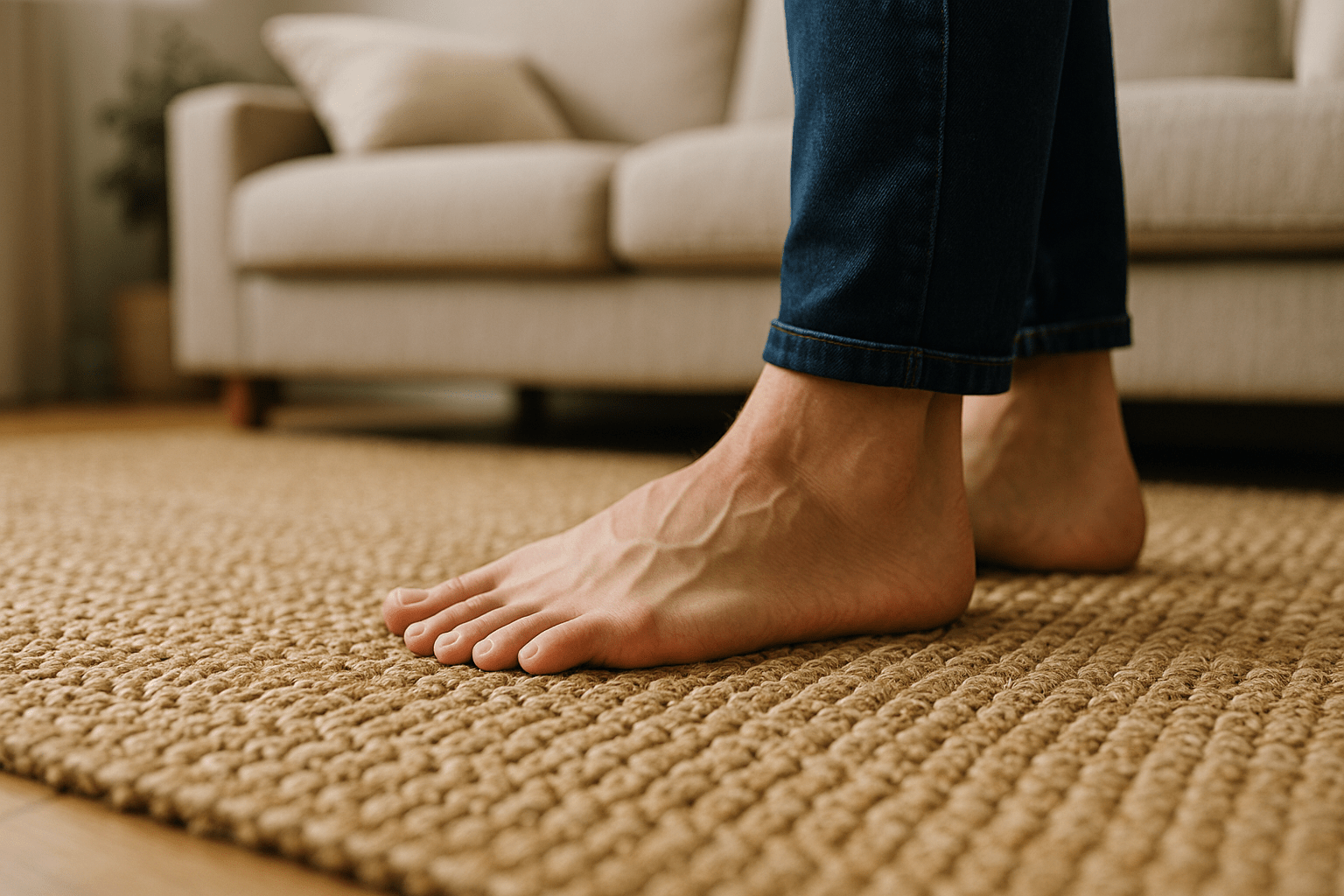Have you ever thought that your comfy carpet might be contributing to indoor micro-plastic pollution? It’s true flooring plays a bigger role in indoor air quality than many of us realise. In this guide, we’ll dive into how microplastics end up in our homes via carpets, what materials are best to avoid the issue, which carpet brands and backings to look for, and how you can maintain flooring in a way that reduces microplastic shedding.
By the end, you’ll be equipped to choose the best carpet to avoid microplastics, protect your health, and make an environmentally sound decision.
What Are Microplastics and Why Carpets Release Them

Microplastics are plastic particles or fibres that measure between about 1 micrometre and 5 millimetres in size invisible to visible, yet pervasive. They originate both from the breakdown of larger plastic items (secondary microplastics) and from small manufactured plastic fragments (primary microplastics).
It’s been estimated that carpeted homes have almost double the number of petrochemical-based microplastic fibres, compared to homes without carpet. Why?
Many carpets use synthetic fibres (nylon, polyester, polypropylene) and plastic-based backings and adhesives. Over time, friction from walking, vacuuming, and wear causes tiny fibres to break off and become part of the indoor dust and air.
According to research, carpets may “double the number of microplastics fibres in the home.”
Why It Matters
Microplastics are now found in human blood, lungs, placentas and while research is still evolving, there is growing concern about their impact on human health. In the indoor environment, where we spend up to 90 % of our time, carpets act as both a source and a trap for particles. Choosing the right carpet material can reduce your exposure.
Carpet Materials That Contribute Most to Microplastics
Nylon and Polyester: The Big Culprits

Many wall-to-wall carpets are made from nylon or polyester piles. These fibres are strong, durable and cheap but they are plastic. With daily wear, microfibres loosen and join the dust load. Homes with such carpets show increased synthetic fibre counts.
Polypropylene Backing and Hidden Risks
Beyond the face fibre, the backing and adhesives often contain plastics like polypropylene (PP) or PVC. Research shows that the carpet industry still lacks transparency on microplastic shedding even when using recycled plastics.
Why Cheap Synthetic Blends Break Down Faster
Lower-cost carpets often compromise on fibre density, backing integrity, or use more filler. This means more points of friction, more fibre shedding, and thus more microplastics entering indoor dust. As one blog noted, while recycled synthetic carpets are marketed as “green,” they still shed microplastics.
The Best Carpet Materials to Avoid Microplastics
Wool Carpets: Natural, Renewable, and Biodegradable
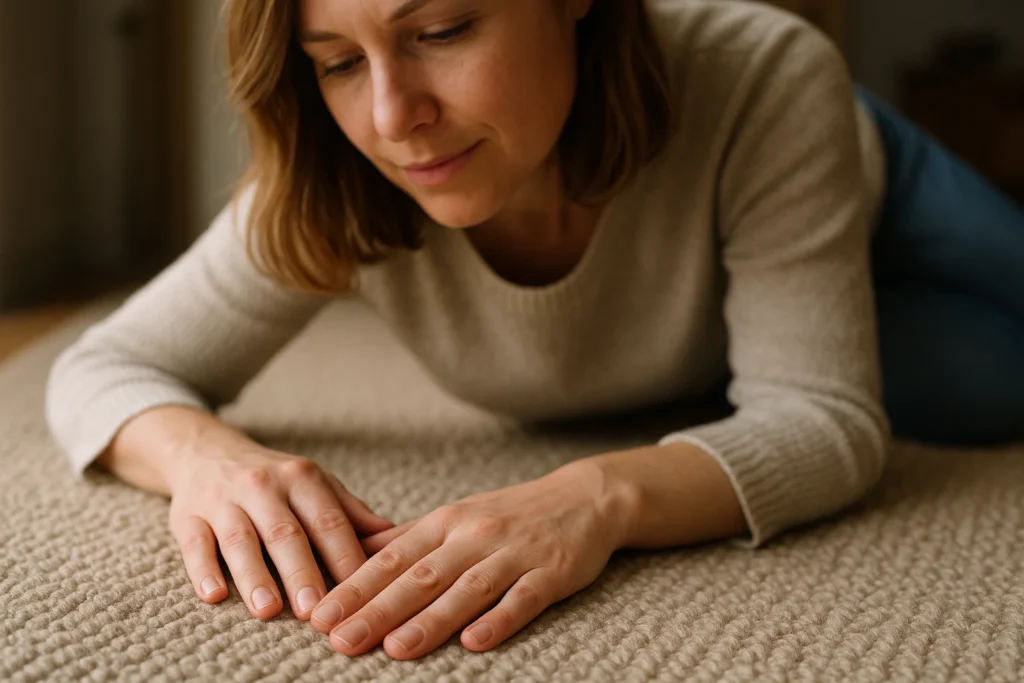
Wool is one of the top choices when you’re aiming to minimise microplastic shedding. It’s a natural fibre, renewable, and when it comes to end of life, biodegradable.
It doesn’t break down into tiny synthetic plastics. By selecting a 100% wool carpet (with natural or minimal plastic backing), you’re reducing potential microplastic load significantly.
Related Topic: Carpet Knife Techniques Every DIY Installer Should Know
Sisal, Jute, and Seagrass: Durable Plant-Based Options
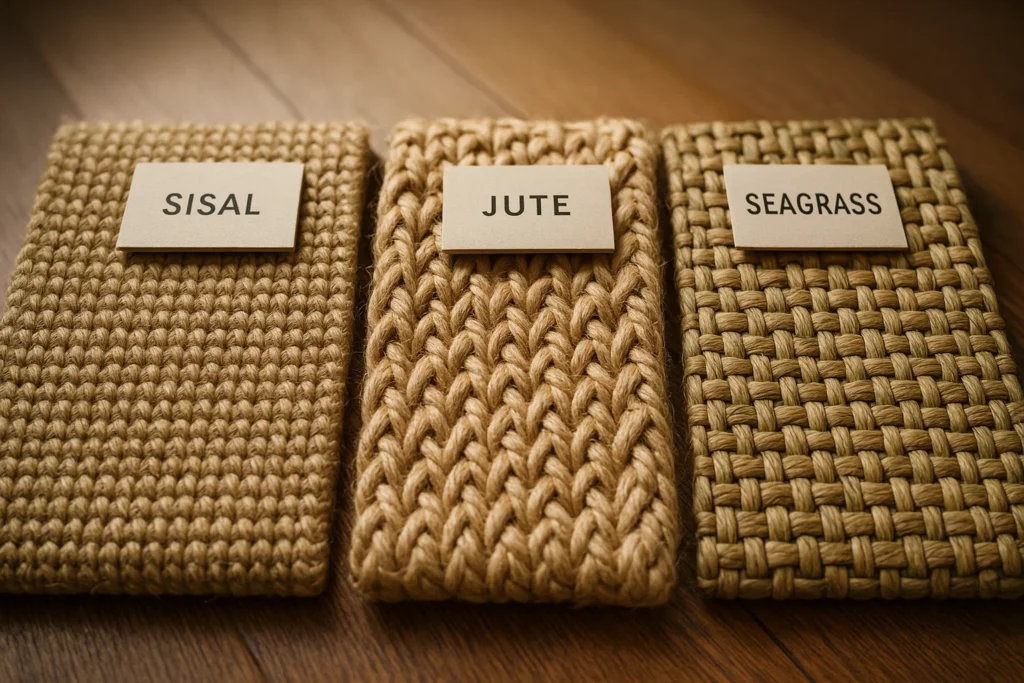
If you prefer a different aesthetic from wool, plant-based carpets like sisal, jute, or seagrass offer strong alternatives. Not only are these materials natural and low in petroplastics, but they also add a texture and style that many people like. A good carpet retailer will clearly state backing and fibre composition.
Cotton and Hemp: Soft but Sustainable Fibre Choices
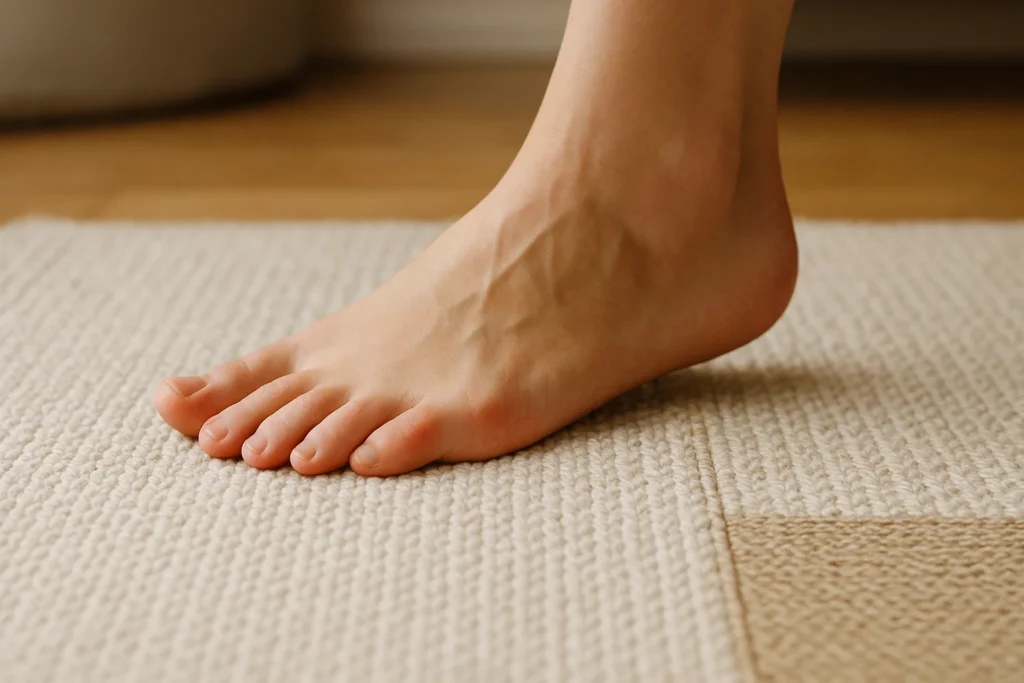
For lighter use areas (bedrooms, lounges) cotton or hemp rugs/carpet coverings can work well. They are soft underfoot and avoid synthetic plastics in the fibre itself—but you must check the backing and adhesives (see next section).
What to Ask for When Shopping
- “Is the face fibre 100 % natural (wool, jute, sisal)?”
- “What is the backing made of? Is it plastic, rubber, latex, or natural felt?”
- “Is the installation adhesive free of PVC or polyurethane foams?”
Making these questions part of your purchase process helps you pick a truly low-microplastic option.
Eco-Friendly Carpet Brands to Consider
Top Sustainable Carpet Manufacturers
Many brands now focus on natural fibres, recycled materials, and low chemical emissions. They may advertise wool-rich collections, plant-based fibre rugs or take-back programs.
According to industry reports, most carpet companies still do not publicly address microplastics but some are moving in the right direction.
Certifications to Look For
- GOTS (Global Organic Textile Standard): for organic fibres
- Green Label Plus: for low emission carpets
- Cradle to Cradle: circular economy certification
These certifications help ensure a carpet has ecosystem-friendly credentials, fewer plastic components, and safer chemical usage.
Minimising Synthetic Additives and Plastic Backings
When choosing a brand, check that they:
- Use minimal PVC in backings
- Offer natural padding options (wool felt, natural latex)
- Provide installation with low-VOC adhesives
- Promote end-of-life recycling or reuse programs
These actions lead to a carpet with a lower overall microplastic footprint.
Related Topic: Subfloor Preparation Carpet: Expert Subfloor Preparation
Carpet Pads and Backings That Don’t Shed Plastic
Natural Latex and Wool Felt Padding
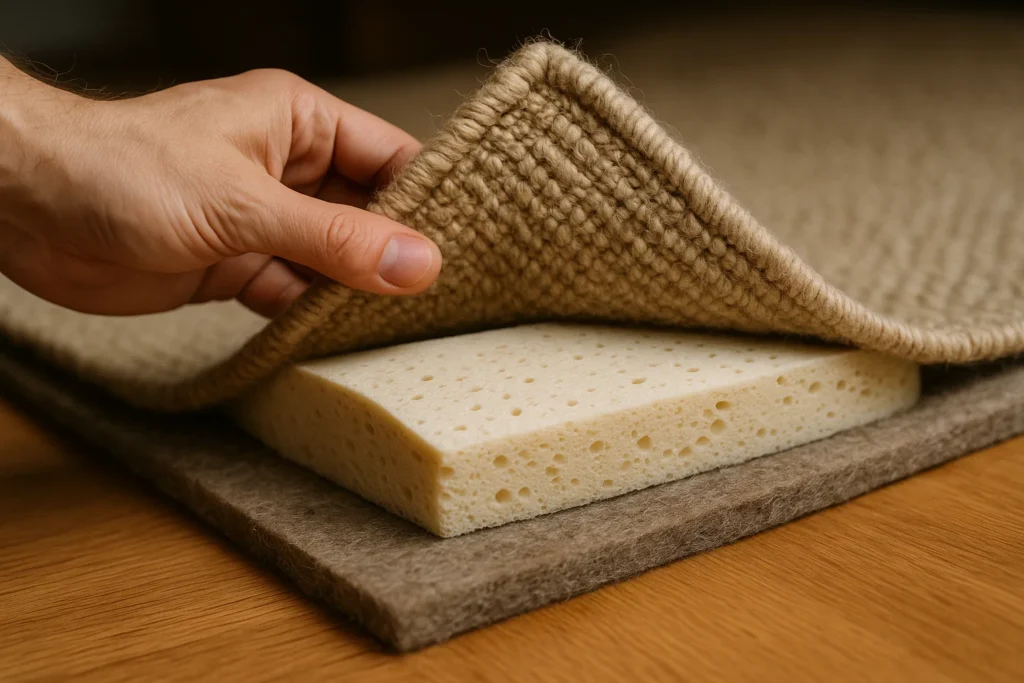
The pad beneath the carpet plays a big role. Natural latex or wool felt pads are excellent, because they don’t contain synthetic polymers that can fragment and shed microplastics.
Avoiding PVC and Polyurethane Foam Pads

Many traditional carpet pads and backings use PVC, polyurethane, or recycled foam. These materials can degrade and add to microplastic dust. Research in built-environment science shows even flooring finishing materials generate microplastics through friction.
Choosing Biodegradable or Recycled Base Layers
Seek out brands that offer recycled wool or natural fibre base layers. Even if the face fibre is natural, if the backing is plastic-heavy, microplastics may still be generated when underfoot pressure fractures the backing or leftover fibres.
Installation Tips That Help
- Ensure the carpet is installed with proper stretching and secure seams (reduces micro-fibre release)
- Use no-PVC adhesive or mechanical fastening
- Request sealed edges and minimal “loose fibre” spots
These actions help ensure the flooring performs longer and sheds less.
How to Maintain a Carpet Without Releasing Microplastics
Use HEPA-filter Vacuums to Capture Fine Particles
Weekly vacuuming with a HEPA FILTER vacuum is one of the most effective ways to reduce microplastic and fibre loading in carpet dust. One study found homes that vacuumed less often had significantly higher microplastic counts.
Clean with Natural Products Instead of Harsh Chemicals
Avoid cleaning products with strong scrubbing or harsh solvents: aggressive cleaning can break down fibres faster and increase shedding. Instead use mild solutions and blot spills quickly.
Proper Ventilation and Humidity Control to Reduce Fibre Wear
High humidity, uneven subfloors, or heavy foot humidity can increase strain on carpet fibres and backing. Ensure good room ventilation, stable humidity, and smooth subfloor for less friction and fibre breakdown.
Rotate Furniture and Use Entry Mats
High-traffic areas cause more fibre wear. Rotate furniture periodically, place natural-fiber rugs at entries to trap dust before it reaches the carpet, and encourage bare feet or soft-soled shoes indoors.
Periodic Deep Clean, But Gentle
Deep clean your carpet annually (or as recommended) using low-moisture methods and minimal agitation. The goal isn’t to flood and scrub, but to refresh the pile, remove embedded dust, and ensure the carpet still breathes well.
Alternatives to Traditional Carpeting
Eco Rugs Made from Organic Cotton or Bamboo
If you’re looking for a rug rather than full wall-to-wall carpet, organic cotton and bamboo rugs (with natural jute or cotton backing) are fantastic low-microplastic choices. They provide softness and feel while keeping plastic content low.
Cork or Hardwood Flooring for a Zero-Plastic Option
If you really want to minimise synthetic micro-plastics entirely, consider hardwood, cork, or stone flooring. These surfaces don’t shed plastic fibres, although they come with their own considerations (cost, comfort, insulation).
Carpet Tiles from Recycled Wool or Bio-Based Materials
Some manufacturers now offer carpet tiles made entirely from recycled wool or bio-based synthetics that are designed to shed less. They offer modular repair (replace single tile instead of full room) and reduce waste and microplastic release over time.
Related Topic: Carpet Seam Repair: DIY Guide to Flawless Flooring
The Future of Plastic-Free Flooring
Innovation in Biodegradable Synthetic Fibres
Research is ongoing into new fibres that mimic nylon or polyester durability but are biodegradable or engineered to shed fewer micro-fibres. Over time, these innovations could change the landscape entirely.
Industry and Government Initiatives to Reduce Microplastic Pollution
The carpet industry has been slower than apparel or textiles in acknowledging microplastics, but pressure is growing. One major report concluded: “No carpet manufacturer or retailer currently has policies or information available on microplastics.”
Regulation and certification standards are likely to evolve to include micro-fibre shedding and microplastic risk.
Why Consumer Demand Is Driving Sustainable Design
As more homeowners become aware of indoor air quality and microplastics, they’re demanding better performance not just stain resistance and durability, but low-plastic shedding, natural materials, and healthier indoor environments. Your choice matters.
Conclusion
When you’re choosing a carpet, thinking beyond looks and price to the material composition and installation makes a meaningful difference. By opting for natural-fibre carpets such as wool, sisal, or jute, paying close attention to backing and padding materials, and maintaining the floor properly, you’ll drastically reduce the release of microplastics into your home.
The best carpet to avoid microplastics doesn’t compromise comfort or design it simply uses smarter, cleaner materials and mindful installation. Choose wisely, care for it well, and enjoy a healthier, more sustainable living space for years to come.
Related Topic: Carpet Stretching 101: The Ultimate Guide to Smooth, Flawless Floors
FAQs
Do all carpets release microplastics?
Not all but most synthetic-fibre carpets (nylon, polyester, polypropylene) release microplastic fibres over time due to wear. Natural-fibre carpets (wool, jute, sisal) release little to none, provided the backing and installation are also low-plastic.
How can I tell if a carpet contains microplastics?
Look at the material label: if it lists nylon, polyester, polypropylene, or other synthetic polymer fibres (and if the backing includes PVC or foam), it likely contains plastic. Ask the retailer about fibre shedding and backing composition.
What’s the most eco-friendly carpet material?
Wool is often considered the gold standard natural, renewable, biodegradable and less prone to shedding plastic fibres. But jute, sisal, and planet-fiber carpets are excellent too, when installed with compatible natural backing/padding.
Are “recycled plastic” carpets good or bad?
They have benefits (reducing virgin plastic waste) but they still shed microplastics because they contain plastic polymers. So they’re better than some virgin-synthetic carpets but they’re not the same as totally plastic-free options.

